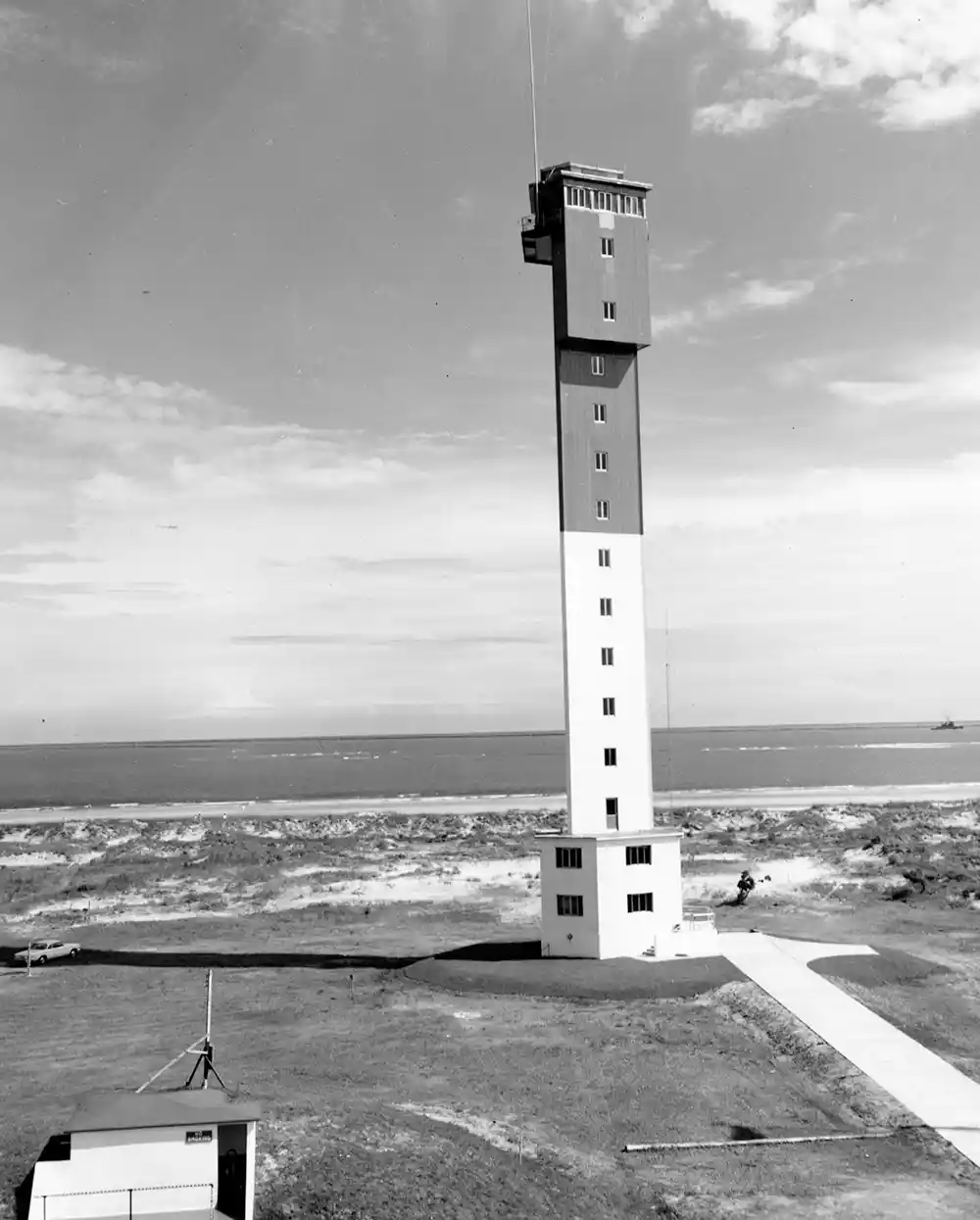
Every nightfall, a rotating light pulsates around Sullivan’s Island twice every 30 seconds. The luminous source is the Charleston Light, also referred to as the Sullivan’s Island Lighthouse, which has stood watch over the cozy beach town for more than six decades.
When the pillar of light was first lit on June 15, 1962, it was recorded as the last major lighthouse in the United States built by the federal government. It was also the second brightest lighthouse in the Western Hemisphere, according to Fort Moultrie National Historical Park guide Shelby McAllister.
 The Charleston Light was erected to replace the defunct Morris Island Light, which was rebuilt in the 1870s after being destroyed in the Civil War. The lighthouse was at risk of being destroyed again by erosion and was later decommissioned.
The Charleston Light was erected to replace the defunct Morris Island Light, which was rebuilt in the 1870s after being destroyed in the Civil War. The lighthouse was at risk of being destroyed again by erosion and was later decommissioned.
Standing at 162.5 feet tall, approaching vessels in the Charleston Harbor could see the flash of the Charleston Light’s 28-million candlepower beam from more than 50 miles offshore. Five years after its construction, its wattage was reduced to 1.2-million candlepower, but it is still visible more than 25 miles away.
Its bright light wasn’t the only thing that caught people’s eyes. Many residents felt the original red and white color scheme was an eyesore. As the sun bleached the red to orange, it was decided that a paint job was in order. Black and white was the popular choice, so the Charleston Light received a makeover.
Sixty-one years later, the mid-century monolithic structure serves as more of a nautical landmark than a navigational aid, but its maritime history is not lost at sea. It was a fixture of the U.S. Coast Guard Historic District that includes buildings dating back to 1894.
When the Coast Guard automated the lighthouse in 1975, it no longer needed a keeper. In 2008, the Coast Guard relinquished ownership to the National Park Service.
THE MAN BEHIND THE LIGHT

Architect Jack Graham’s creation was not only the last of its kind, but it was also one of a kind. His vision for the lighthouse lit up in his mind when he was a 25-year-old graduate of the University of Pennsylvania School of Architecture and a serviceman in the Coast Guard.
In Graham’s last month of active duty, a supervisor gave him a final assignment of designing a lighthouse. The Coast Guard was displeased with the previous drawings that made it resemble a World War I battleship signal tower. By the time Graham was finished, it looked like an air traffic control tower.
Unlike typical circular lighthouses, Graham’s design was triangular with steel girders for the framework and aluminum alloy for siding. He credited his modernist approach and design to his college professor Louis Kahn, an influential modern architect in the post-World War II era known for his monumental and brutalist style.
In September 1989, Graham’s work would be put to the test when Hurricane Hugo lashed the island as a Category 5. The lighthouse’s design was intended to withstand winds up to 125 miles per hour. Hugo brought winds of 160 miles per hour, and the lighthouse never faltered.
In 2009, on Graham’s 75th birthday, he was able to view his creation from the top as he rode in the elevator for the first time. He wasn’t aware that his design was used for the lighthouse until three years after it was built, when he was flipping through a boating magazine.
The lighthouse became eligible to be listed on the National Register as part of the structures in the Coast Guard Historic District in 2012. That same year marked the structure’s 50th anniversary, during which Graham was recognized for the first time with an official ceremony and a historical marker on site.
Before Graham’s passing in June 2022, his wife Martha, who lives in Maryland, wrote “The Charleston Light and The Adventures of Scoops the Seagull.” The children’s book is about the lighthouse, which her beloved husband nicknamed “Sulli.”
Graham’s story lives on in the annals of history and is rekindled every time the sun sinks down past the horizon on Sullivan’s Island. That’s when the lighthouse and Graham’s legacy truly come to life.
Today, the lighthouse stands as one of the most technologically advanced for its time. It is the only lighthouse in America that has both an elevator and air conditioning, according to McAllister.
Due to ongoing problems with the elevator, there are no plans to open the lighthouse to the public. Of the 15 historic lighthouses in the state, none are currently open to the public due mainly to structural issues, she noted.
“This is history that is slowly disappearing, but not many people realize that,” McAllister added.
The National Park Service celebrates National Lighthouse Day every August by opening the Sullivan’s Island Lighthouse grounds to the public. The last time the lighthouse was open for tours was 2018.
By Zach Giroux

Leave a Reply